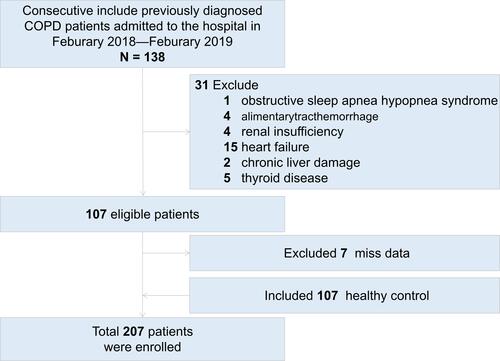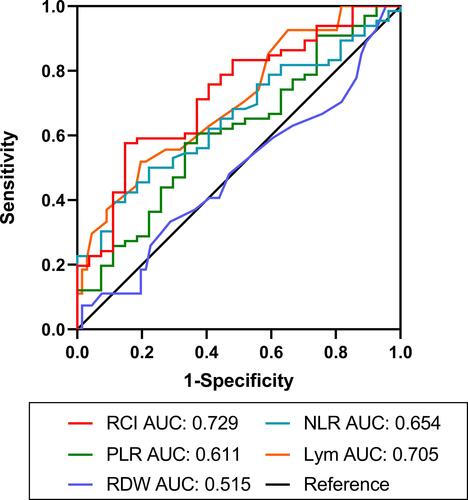Figures & data
Figure 1 Flow chart showing the literature search and selection. Specific reasons for exclusion of studies are also shown.

Table 1 Comparison of COPD Patients and Healthy Controls
Table 2 T-Tests for Groups Divided According to RCI with Severity of Disease and Other Functions
Figure 2 Correlations of the RCI, NLR and PLR with FEV1%.

Figure 3 ROC curves of the RCI, NLR, PLR, Lym and RDW of COPD patients, for predicting severe or mild COPD. The area under ROC curve of RCI: 0.729; 95% CI: 0.619–0.839; p = 0.001.

Table 3 Univariate Logistic Regression Analysis Assesses Different Prognostic Predictors of COPD
Table 4 Adjusted Odds Ratio (95% Confidence Interval) for Severe COPD (GOLD III + IV)
